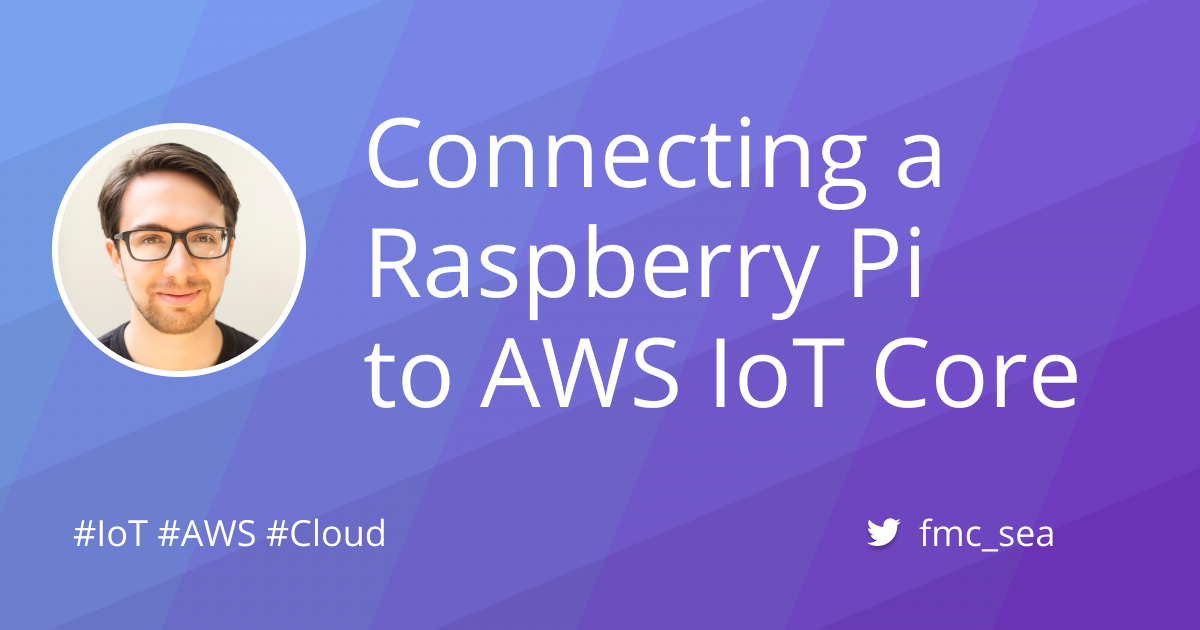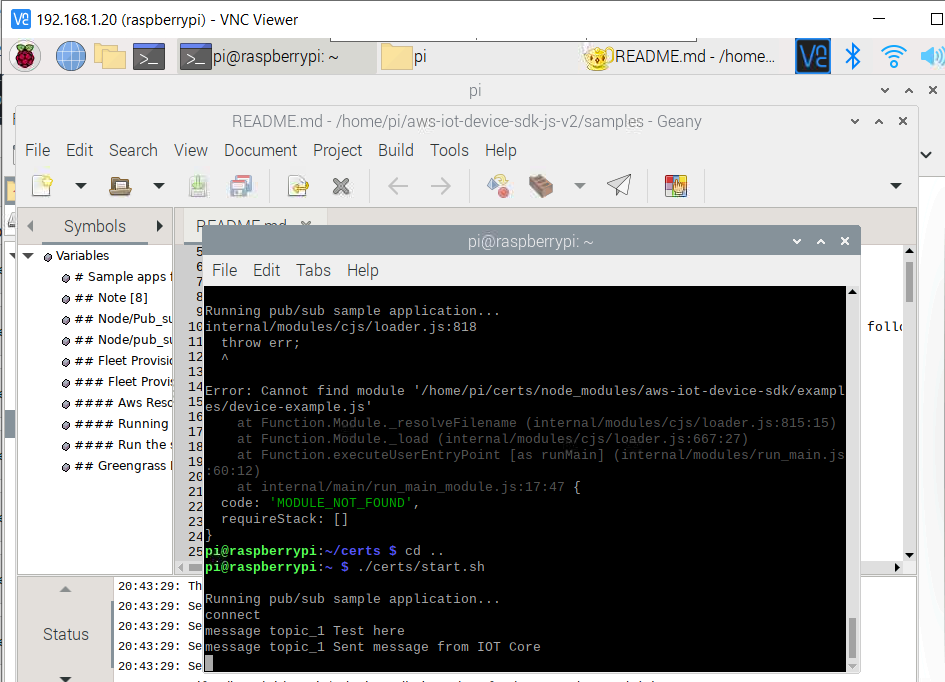Connecting Raspberry Pi to AWS IoT has become an essential skill for developers and hobbyists who want to build robust, scalable, and secure IoT applications. By leveraging the power of AWS IoT, you can transform your Raspberry Pi into a smart device capable of interacting with cloud services and other connected devices. This comprehensive guide will walk you step-by-step through the process, ensuring you have all the knowledge and tools needed to succeed.
In today's interconnected world, IoT (Internet of Things) is revolutionizing industries and everyday life. From smart homes to industrial automation, IoT applications are driving innovation. At the heart of many IoT projects lies the Raspberry Pi, a versatile and affordable single-board computer that can be easily configured to work with cloud platforms like AWS IoT.
This guide is designed for beginners and advanced users alike. Whether you're just starting with IoT or looking to enhance your existing projects, this article will provide you with the expertise, authority, and trustworthiness needed to connect Raspberry Pi to AWS IoT effectively. Let's dive in!
Table of Contents
- Introduction to AWS IoT
- Raspberry Pi Overview
- Why Connect Raspberry Pi to AWS IoT?
- Prerequisites
- Step-by-Step Guide
- Testing the Connection
- Best Practices
- Troubleshooting
- Real-World Applications
- Conclusion
Introduction to AWS IoT
AWS IoT is a managed cloud service designed to interact with billions of devices and route trillions of messages. It allows developers to connect devices to the cloud and other devices securely and easily. AWS IoT Core, the heart of the platform, provides a message broker for MQTT, a lightweight protocol ideal for IoT devices like Raspberry Pi.
By connecting Raspberry Pi to AWS IoT, you can send data to the cloud, process it using AWS Lambda, store it in Amazon S3, and visualize it using Amazon QuickSight. This integration opens up endless possibilities for creating innovative IoT solutions.
Raspberry Pi Overview
Raspberry Pi is a small, affordable computer that can run various operating systems, including Raspbian, Ubuntu, and others. It has become the go-to platform for hobbyists, educators, and professionals alike due to its versatility and ease of use. With its GPIO pins, Raspberry Pi can interface with sensors, actuators, and other hardware components, making it ideal for IoT projects.
Some of the key features of Raspberry Pi include:
- Low power consumption
- Compact size
- Support for multiple programming languages
- Extensive community support
Why Connect Raspberry Pi to AWS IoT?
Connecting Raspberry Pi to AWS IoT offers numerous benefits, including:
- Scalability: AWS IoT can handle millions of devices and billions of messages, ensuring your IoT application can grow as needed.
- Security: AWS IoT provides end-to-end encryption, device authentication, and authorization, ensuring your data remains secure.
- Integration: AWS IoT integrates seamlessly with other AWS services, allowing you to build complex workflows and applications.
- Cost-effectiveness: Raspberry Pi and AWS IoT offer a cost-effective solution for building IoT applications, making it accessible for individuals and small businesses.
Prerequisites
Before you begin connecting Raspberry Pi to AWS IoT, ensure you have the following:
- Raspberry Pi (any model with Wi-Fi or Ethernet capability)
- MicroSD card with Raspbian OS installed
- Power supply for Raspberry Pi
- An AWS account with appropriate permissions
- A text editor or IDE for coding
Having these prerequisites in place will ensure a smooth setup process.
Step-by-Step Guide
Setup AWS Account
To connect Raspberry Pi to AWS IoT, you first need to set up an AWS account if you don't already have one. Follow these steps:
- Go to the AWS website and sign up for a free tier account.
- Create an IAM user with the necessary permissions for AWS IoT.
- Set up AWS IoT Core and create a thing, certificate, and policy.
Install AWS IoT SDK
Once your AWS account is ready, install the AWS IoT SDK on your Raspberry Pi:
- Update your Raspberry Pi OS using the command:
sudo apt update && sudo apt upgrade. - Install Python and pip if they are not already installed.
- Install the AWS IoT Device SDK for Python using pip:
pip install AWSIoTPythonSDK.
Configure Raspberry Pi
Configure your Raspberry Pi to connect to AWS IoT:
- Set up your Raspberry Pi's network connection (Wi-Fi or Ethernet).
- Transfer the certificate and private key from AWS IoT to your Raspberry Pi.
- Write a Python script to connect Raspberry Pi to AWS IoT using the SDK.
Testing the Connection
After completing the setup, test the connection between Raspberry Pi and AWS IoT:
- Publish a test message from Raspberry Pi to AWS IoT.
- Subscribe to a topic in AWS IoT Core and verify that the message is received.
- Check the AWS IoT console for any errors or issues.
Testing ensures that your setup is functioning correctly and helps identify any potential problems.
Best Practices
When connecting Raspberry Pi to AWS IoT, follow these best practices:
- Use strong passwords and enable two-factor authentication for your AWS account.
- Regularly update your Raspberry Pi OS and installed packages to ensure security.
- Limit the permissions of your IAM user to only what is necessary for AWS IoT.
- Monitor your AWS IoT usage and set up alerts for unusual activity.
Implementing these practices will enhance the security and reliability of your IoT application.
Troubleshooting
Encountering issues while connecting Raspberry Pi to AWS IoT is common. Here are some troubleshooting tips:
- Check your network connection and ensure Raspberry Pi has internet access.
- Verify that the certificate and private key are correctly installed on Raspberry Pi.
- Review the AWS IoT logs for any errors or warnings.
- Consult the AWS IoT documentation or community forums for additional help.
By following these tips, you can resolve most issues quickly and efficiently.
Real-World Applications
Connecting Raspberry Pi to AWS IoT enables a wide range of real-world applications, such as:
- Smart Home Automation: Control lights, thermostats, and security systems using AWS IoT.
- Environmental Monitoring: Collect data from sensors and analyze it in the cloud to monitor air quality, temperature, and humidity.
- Industrial IoT: Monitor machinery performance and predict maintenance needs using IoT devices and AWS analytics.
These applications demonstrate the power and flexibility of combining Raspberry Pi with AWS IoT.
Conclusion
Connecting Raspberry Pi to AWS IoT is a powerful way to build innovative IoT applications. By following this comprehensive guide, you have gained the knowledge and tools needed to successfully connect your Raspberry Pi to AWS IoT. Remember to adhere to best practices and troubleshoot any issues that arise.
We encourage you to take action by implementing what you've learned and exploring the possibilities of IoT. Share your experiences in the comments below, and don't forget to check out our other articles for more insightful content.

